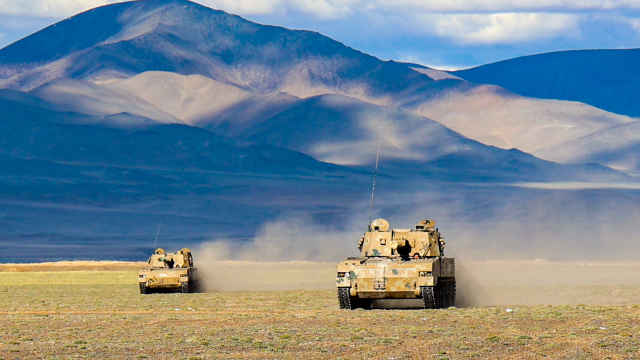China’s two million uniformed military personnel form a large and powerful force, but there is an overlooked aspect of China’s defense system that dwarfs its regular forces and should be giving Asian nations concern. China’s reserve auxiliary force is estimated to contain as many as eight million additional personnel, according to Western analysts. During the 1960’s Cultural Revolution period, barefoot soldiers were ill-trained and ill-equipped. Today, China’s war planners are leaning more heavily on a better equipped reserve auxiliary force composed largely of former uniformed soldiers and others with specialized skills and training.
Where the leadership in Beijing once relied on its militia to play only a supplementary support role, it is now assigning those personnel new responsibilities. This summer, reserve force exercises conducted in Hunan Province included training in piloting drones, driving assault boats, and manning command-and-control vehicles, says Thomas Corbett and Peter Singer of Defense One. It represents a change from the militia’s indirect involvement in warfare to an active and direct role working with the People’s Liberation Army (PLA).
Official documents indicate that China began integrating its militia force capabilities into the PLA when it created the National Defense Mobilization Department (NDMD) in 2016. Beijing used joint-cooperation agreements to combine civilian and military personnel and provide the PLA with easily accessible human resources. Blue Path Labs recently produced a report for the China Aerospace Studies Institute with two key findings. The reserve forces are providing expanded support to the People’s Liberation Army Air Force (PLAAF). Secondly, in the case of a protracted war in Asia, senior military leaders intend to use civilian assets in the reserve force in critical front-line roles. Reserve units provide different specialized skills to the uniformed forces. A PLAAF airfield might rely on a local militia to excavate and resurface a runway, while another provides medical treatment, meteorological assistance, and help with surveying, says Corbett and Singer.
China also counts on its civilian businesses near PLA bases to support the uniformed military. They might provide access to transportation facilities, airport terminals, and local fuel supplies that could be needed during a PLA operation. In the event of a protracted conflict, the assistance might include in-house support capabilities as a cost-saving measure. By doing so, the regular forces would not need to maintain as many vehicles. In one recent case, civilian support allowed one regiment to cut its support force by 50% and reduce transportation requirements by 200 vehicles, according to Defense One.
As China prepares for potential war in Asia, these joint-cooperation agreements are becoming more common and increasing in importance. Many PLA units this summer invited local reserve forces to military bases to work within PLA units. The intention is to provide China additional options during a conflict. In one case this summer a PLAAF base conducted a two-week support exercise that included the reserves acting out their potential roles in wartime.
Over 150 personnel at an air base in Xuzhou performed emergency response activities, provided medical support, and repaired a damaged airfield. Beijing is starting to assign reserve forces increasingly complex tasks and more important missions this year. The political leadership is moving beyond using these forces for pre-combat support on a regular basis. The PLA itself is also improving interoperability and blurring the line between support and front-line combat. According to Defense One, “Several airfields have begun tasking their militias with setting up anti-aircraft platforms and building field communication facilities.” One analyst familiar with Chinese naval operations compared it to preparations conducted by Japan for WWII military operations and the implementation of its Co-Prosperity Sphere in East Asia. The reserve forces today are cross-training to fill in technical gaps that exist within the uniformed forces.
Although some reserve troops complain about the time demands and being taken away from the day jobs, the integration program is working. One remaining major issue is that Chinese forces are not battle-tested, have not worked together under pressure, and the reserves may not have sufficient training and discipline to act in a high-stress environment.
Daria Novak served in the U.S. State Dept.
